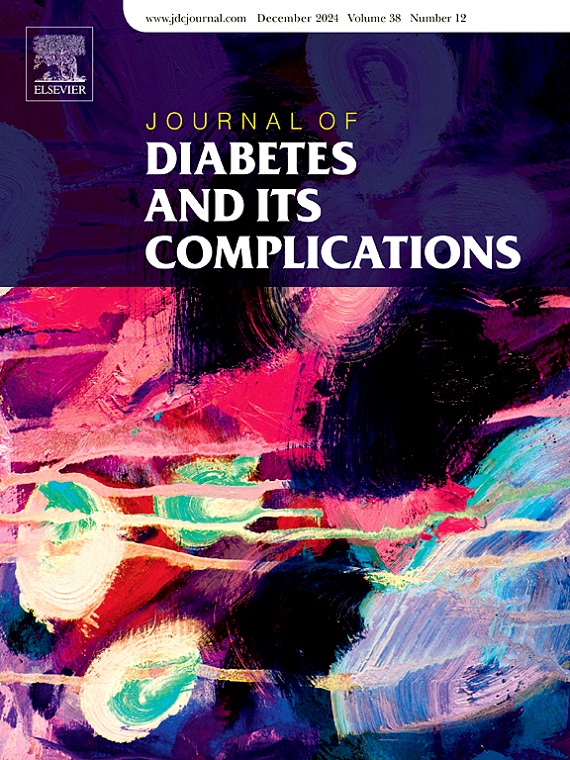The role of artificial intelligence in diabetic retinopathy screening in type 1 diabetes: A systematic review
IF 3.1
3区 医学
Q3 ENDOCRINOLOGY & METABOLISM
引用次数: 0
Abstract
Background/objectives
Diabetic retinopathy (DR) is one of the leading causes of blindness in adults worldwide and represents a critical complication in both type 1 (T1D) and type 2 (T2D) diabetes. Artificial Intelligence (AI) offers a promising opportunity to enhance both the accuracy of screening and the efficiency of ongoing care management, assisting healthcare providers in mitigating the incidence and complications of DR.
Methods
Systematic review of the literature was conducted following PRISMA guidelines. Searches were performed using PubMed-Medline, Scopus, and Embase databases, with the protocol registered on the Open Science Framework (OSF) database: (doi.org/10.17605/OSF.IO/TJ9UH). A predefined search strategy utilizing Boolean operators was applied, and two researchers independently selected articles, with a third resolving any discrepancies.
Results
Of the 2127 articles identified, 8 studies were included. The results highlighted that AI is particularly effective in enhancing the DR screening process in patients with T1D, offering rapid and reliable analysis. Healthcare providers reported positive feedback, noting its significant contribution to improving patient management.
Conclusions
The integration of AI into DR care pathways shows substantial potential for improving early diagnosis and disease management, particularly for patients with T1D. Further research is required to optimize AI implementation and ensure its positive and sustainable impact on public health.
人工智能在1型糖尿病视网膜病变筛查中的作用:系统综述
背景/目的糖尿病视网膜病变(DR)是全球成年人失明的主要原因之一,是1型(T1D)和2型(T2D)糖尿病的重要并发症。人工智能(AI)提供了一个很有希望的机会来提高筛查的准确性和持续护理管理的效率,帮助医疗保健提供者减少dr的发生率和并发症。方法按照PRISMA指南对文献进行系统的回顾。使用PubMed-Medline、Scopus和Embase数据库进行搜索,协议注册在开放科学框架(OSF)数据库:(doi.org/10.17605/OSF.IO/TJ9UH)。应用了使用布尔运算符的预定义搜索策略,两位研究人员独立选择文章,第三位研究人员解决任何差异。结果在纳入的2127篇文献中,纳入了8项研究。结果强调,人工智能在加强T1D患者的DR筛查过程中特别有效,提供了快速可靠的分析。医疗保健提供者报告了积极的反馈,指出其对改善患者管理的重大贡献。结论:人工智能与DR护理途径的整合显示出改善早期诊断和疾病管理的巨大潜力,特别是对于T1D患者。需要进一步研究以优化人工智能的实施并确保其对公共卫生产生积极和可持续的影响。
本文章由计算机程序翻译,如有差异,请以英文原文为准。
求助全文
约1分钟内获得全文
求助全文
来源期刊

Journal of diabetes and its complications
医学-内分泌学与代谢
CiteScore
5.90
自引率
3.30%
发文量
153
审稿时长
16 days
期刊介绍:
Journal of Diabetes and Its Complications (JDC) is a journal for health care practitioners and researchers, that publishes original research about the pathogenesis, diagnosis and management of diabetes mellitus and its complications. JDC also publishes articles on physiological and molecular aspects of glucose homeostasis.
The primary purpose of JDC is to act as a source of information usable by diabetes practitioners and researchers to increase their knowledge about mechanisms of diabetes and complications development, and promote better management of people with diabetes who are at risk for those complications.
Manuscripts submitted to JDC can report any aspect of basic, translational or clinical research as well as epidemiology. Topics can range broadly from early prediabetes to late-stage complicated diabetes. Topics relevant to basic/translational reports include pancreatic islet dysfunction and insulin resistance, altered adipose tissue function in diabetes, altered neuronal control of glucose homeostasis and mechanisms of drug action. Topics relevant to diabetic complications include diabetic retinopathy, neuropathy and nephropathy; peripheral vascular disease and coronary heart disease; gastrointestinal disorders, renal failure and impotence; and hypertension and hyperlipidemia.
 求助内容:
求助内容: 应助结果提醒方式:
应助结果提醒方式:


